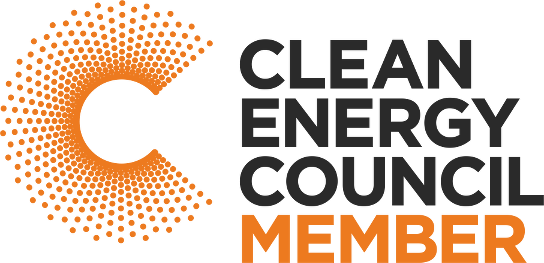FAQs
SOLAR POWER COSTS & SAVINGS
How much does it cost to install solar panels?
The upfront cost of your solar PV system is affected by a number of different factors, including:
- government incentives and support schemes available
- contractor installation costs
- type and number of solar panels, which affect the output of your system in kilowatts (kW)
- type and size of inverter (the part of the system that converts the electrical output of your solar panels into AC electricity for use in your home or business)
- type of framing equipment and other system components
- height and accessibility of roof and whether it is tiled, metal or concrete
- any after-sales service agreements
As a very rough guide, the total cost of getting a home solar system up and running is between $2500 (for a small 1.5 kW system) and $11,500 (for a top-of-the-line 5 kW system).
For businesses, the approximate cost of installing solar ranges from around $15,000 (for a 10kW system) to more than $200,000 (for a high-capacity 100 kW system).
For more on the costs involved in going solar, refer to our guide to installing solar for households or businesses.
How much money will I save with solar panels?
- Your energy consumption and the size of your solar power system – if you use more power than your system is capable of producing, your savings will be reduced. This can be avoided by choosing the right-sized system for your needs.
- Your feed-in tariff – this is the amount your electricity retailer pays you for any excess power your solar panels generate.
- Your usage patterns – solar panels can only generate electricity while the sun is shining. This means that households that use a lot of power during the day may attract greater savings than those that consume most of their power at night. However, you will still receive a feed-in tariff for any excess electricity you generate during the day.
- Where you live – some areas of Australia receive a lot more sunlight than others, so a solar PV system in Brisbane will usually generate more power than one in Hobart.
Businesses have a couple of other things to take into account, including the tax implications of any revenue received from feed-in tariffs.
A Clean Energy Council Approved Solar Retailer must provide a site-specific estimate of your system’s energy generation. Many solar companies will also calculate the impact this has on your bill.
For more information on the factors that affect solar savings, download our free guide to installing solar for households or businesses.
How do I find out how much I pay for electricity?
PURCHASING SOLAR PANELS
How much does it cost to install solar panels?
The upfront cost of your solar PV system is affected by a number of different factors, including:
- government incentives and support schemes available
- contractor installation costs
- type and number of solar panels, which affect the output of your system in kilowatts (kW)
- type and size of inverter (the part of the system that converts the electrical output of your solar panels into AC electricity for use in your home or business)
- type of framing equipment and other system components
- height and accessibility of roof and whether it is tiled, metal or concrete
- any after-sales service agreements
As a very rough guide, the total cost of getting a home solar system up and running is between $2500 (for a small 1.5 kW system) and $11,500 (for a top-of-the-line 5 kW system).
For businesses, the approximate cost of installing solar ranges from around $15,000 (for a 10kW system) to more than $200,000 (for a high-capacity 100 kW system).
For more on the costs involved in going solar, refer to our guide to installing solar for households or businesses.
How much money will I save with solar panels?
- Your energy consumption and the size of your solar power system – if you use more power than your system is capable of producing, your savings will be reduced. This can be avoided by choosing the right-sized system for your needs.
- Your feed-in tariff – this is the amount your electricity retailer pays you for any excess power your solar panels generate.
- Your usage patterns – solar panels can only generate electricity while the sun is shining. This means that households that use a lot of power during the day may attract greater savings than those that consume most of their power at night. However, you will still receive a feed-in tariff for any excess electricity you generate during the day.
- Where you live – some areas of Australia receive a lot more sunlight than others, so a solar PV system in Brisbane will usually generate more power than one in Hobart.
Businesses have a couple of other things to take into account, including the tax implications of any revenue received from feed-in tariffs.
A Clean Energy Council Approved Solar Retailer must provide a site-specific estimate of your system’s energy generation. Many solar companies will also calculate the impact this has on your bill.
For more information on the factors that affect solar savings, download our free guide to installing solar for households or businesses.
How do I find out how much I pay for electricity?
SOLAR SAFETY & RELIABILITY
How much does it cost to install solar panels?
The upfront cost of your solar PV system is affected by a number of different factors, including:
- government incentives and support schemes available
- contractor installation costs
- type and number of solar panels, which affect the output of your system in kilowatts (kW)
- type and size of inverter (the part of the system that converts the electrical output of your solar panels into AC electricity for use in your home or business)
- type of framing equipment and other system components
- height and accessibility of roof and whether it is tiled, metal or concrete
- any after-sales service agreements
As a very rough guide, the total cost of getting a home solar system up and running is between $2500 (for a small 1.5 kW system) and $11,500 (for a top-of-the-line 5 kW system).
For businesses, the approximate cost of installing solar ranges from around $15,000 (for a 10kW system) to more than $200,000 (for a high-capacity 100 kW system).
For more on the costs involved in going solar, refer to our guide to installing solar for households or businesses.
How much money will I save with solar panels?
- Your energy consumption and the size of your solar power system – if you use more power than your system is capable of producing, your savings will be reduced. This can be avoided by choosing the right-sized system for your needs.
- Your feed-in tariff – this is the amount your electricity retailer pays you for any excess power your solar panels generate.
- Your usage patterns – solar panels can only generate electricity while the sun is shining. This means that households that use a lot of power during the day may attract greater savings than those that consume most of their power at night. However, you will still receive a feed-in tariff for any excess electricity you generate during the day.
- Where you live – some areas of Australia receive a lot more sunlight than others, so a solar PV system in Brisbane will usually generate more power than one in Hobart.
Businesses have a couple of other things to take into account, including the tax implications of any revenue received from feed-in tariffs.
A Clean Energy Council Approved Solar Retailer must provide a site-specific estimate of your system’s energy generation. Many solar companies will also calculate the impact this has on your bill.
For more information on the factors that affect solar savings, download our free guide to installing solar for households or businesses.



